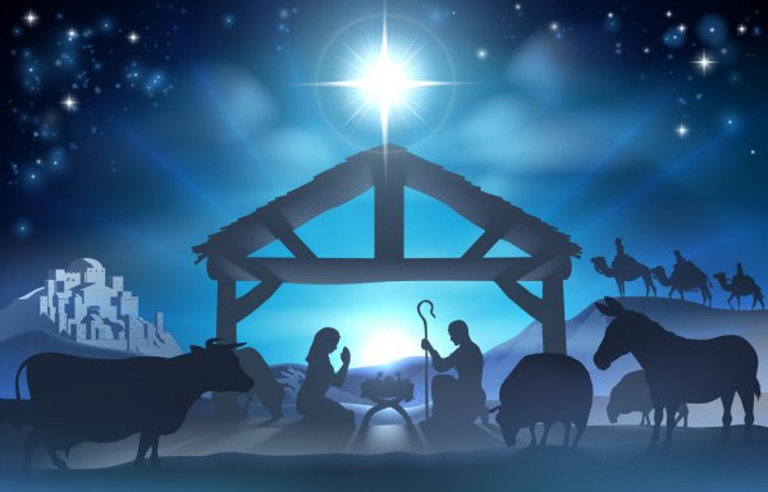The Christmas Nativity: A Story Told, Retold, and Transformed
The Nativity is a holiday favorite, but what's the real story? Compare what’s popular with historical facts. Find out the truth today!
Grace Callahan
2/13/202524 min read
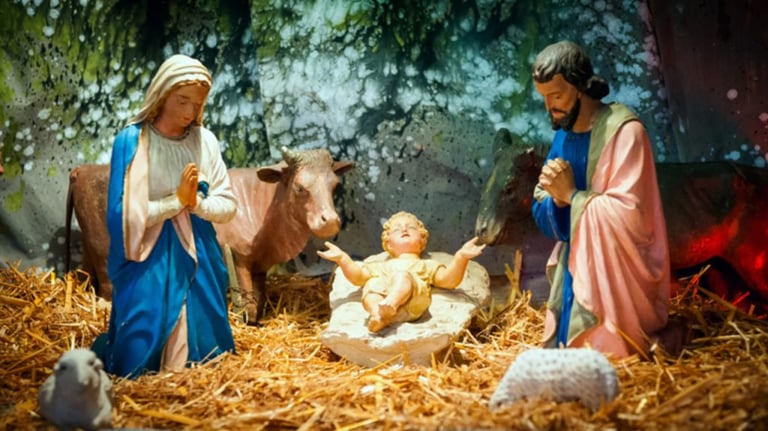

Witness the Nativity story’s incredible journey through time and retelling.
Introduction
The story of Jesus’ birth is one of the most well-known tales in history, yet its details can surprise many. What does the Bible actually say about the Nativity, and what is often added or left out? History and archaeology provide insights that either support or challenge traditional views. The way we interpret the Nativity affects our understanding of its significance. Over centuries, art, literature, and pop culture have reshaped this story to reflect our ideals. This exploration will uncover the biblical truths, the historical context, and the evolving narrative of Jesus’ birth, revealing layers of meaning that have transformed through time.
Unpacking the Nativity: What the Bible Says vs. What We Think We Know
Two Gospels, Two Perspectives—One Story?
If you’ve ever assumed the Nativity story comes from one seamless biblical account, you’re in for a surprise. The birth of Jesus is told in two Gospels—Matthew and Luke—and their narratives, while complementary, are strikingly different. Why does this matter? Because how we interpret these differences shapes not only our understanding of Jesus’ birth but also how traditions, theology, and even pop culture have framed the story over time.
Luke’s Version: Humble Beginnings and Shepherds
Luke’s Gospel (Luke 2:1-20) paints a deeply human and humble picture of Jesus' birth. Here, we find:
A pregnant Mary and Joseph traveling to Bethlehem for a Roman census.
No room at the inn—leading to Jesus being placed in a manger (not necessarily a stable).
An angelic announcement not to kings or priests, but to lowly shepherds, emphasizing Jesus' connection to the marginalized.
This version presents Jesus as a king for the humble, the poor, and the outcasts. The shepherds—dirty, overlooked, and unimportant in society—are the first to receive the news. Is Luke making a theological point? Absolutely. This isn’t just a birth story; it’s a declaration that Jesus came for those at the bottom of society.
Matthew’s Version: Kings, Prophecy, and Political Tension
Matthew 2:1-23 gives us a different lens—one that’s rich in Jewish prophecy and political tension. Key elements include:
The famous Magi (Wise Men) following a star to find the newborn king.
King Herod’s paranoia about a potential rival, leading to the massacre of infants in Bethlehem.
Mary and Joseph fleeing to Egypt—a direct parallel to Moses and the Exodus.
Matthew’s account presents Jesus as the long-awaited Jewish Messiah, whose arrival fulfills Old Testament prophecies. His version is more regal, more political, and deeply rooted in Jewish expectations of a coming savior. No shepherds here—only royal visitors and a murderous king.
Why Are These Accounts So Different?
Different Audiences: Luke writes for Gentiles, emphasizing Jesus’ accessibility to all. Matthew writes for Jewish readers, showing Jesus as the fulfillment of prophecy.
Different Theological Focus: Luke stresses humility and social justice; Matthew highlights kingship and divine destiny.
No Contradictions, Just Priorities: The accounts don’t cancel each other out—they frame Jesus’ birth through different theological lenses.
What Was First-Century Judea Really Like?
To fully grasp the Nativity, we need to step into the world of first-century Judea—a land under Roman control, simmering with political unrest and messianic expectations.
Roman Rule: Judea was under the iron grip of Herod the Great, a puppet king loyal to Rome. His rule was marked by massive building projects (including the expansion of the Temple) and brutal suppression of dissent.
Jewish Messianic Hopes: Many Jews were waiting for a deliverer—a warrior king like David—who would overthrow Rome and restore Israel’s independence.
Daily Life: Most people lived in small, cramped homes, worked in agriculture or trade, and followed strict religious customs. Bethlehem was a small, unremarkable town—until it became forever linked to Jesus’ birth.
Archaeological Clues: What Do We Actually Know?
Archaeology offers intriguing, though not definitive, insights into the Nativity’s historical backdrop. Some key findings:
The “Manger” Setting: First-century homes often had a lower-level area for animals, meaning Jesus could have been born in a household setting rather than a wooden stable (contrary to nativity scene traditions).
Bethlehem’s Status: Small, yes, but not insignificant—the Hebrew Bible had already established it as the birthplace of King David, fueling its messianic significance.
The Census Debate: Some scholars question whether a Roman census required Joseph to travel to Bethlehem, as Luke describes. However, administrative practices of the time remain debated.
History, Scripture, and Tradition—Where Do They Meet?
The Nativity story isn’t just history or theology—it’s both. The challenge? Separating centuries of artistic interpretation from the core biblical texts. Every nativity scene, Christmas carol, and church play reflects not just the Gospel accounts but also layers of cultural adaptation.
So, when we celebrate the Nativity, are we celebrating history, faith, or tradition? Maybe all three.
Did the Birth of Jesus Fulfill Ancient Prophecies?
For Christians, the Nativity isn’t just a miraculous birth story—it’s the fulfillment of centuries-old prophecies woven throughout the Old Testament. But here’s the real question: Do these prophecies definitively point to Jesus, or are they later interpretations meant to fit the narrative?
Key Prophecies About the Messiah
Several Old Testament passages are frequently cited as predicting the birth of Jesus, particularly in Isaiah, Micah, and Psalms. Let’s break down a few of the most well-known:
Isaiah 7:14 – “Behold, the virgin shall conceive and bear a son, and shall call his name Immanuel.”
Christians see this as a direct prophecy of Jesus’ virgin birth.
Scholars debate whether “virgin” is the right translation—some argue the Hebrew word almah simply means young woman.
Micah 5:2 – “But you, Bethlehem Ephrathah, though you are small among the clans of Judah, out of you will come for me one who will be ruler over Israel.”
This one seems like a slam dunk—Jesus was born in Bethlehem.
But skeptics question whether the Gospel writers framed Jesus’ birthplace to align with this prophecy.
Isaiah 9:6 – “For to us a child is born, to us a son is given... and he will be called Wonderful Counselor, Mighty God, Everlasting Father, Prince of Peace.”
A passage often read at Christmas, but was Isaiah really talking about Jesus?
Some argue this originally referred to a historical king of Judah, later reinterpreted as messianic prophecy.
Did Jesus “Fit” the Messianic Blueprint?
Early Christians, especially Matthew, made a deliberate effort to show how Jesus fulfilled prophecy. Throughout his Gospel, Matthew repeatedly uses the phrase “this was to fulfill what was spoken by the prophet…” to tie Jesus to Jewish expectations of the Messiah.
Coincidence or Divine Fulfillment? Skeptics argue that some events could have been shaped to align with prophecy—for example, Matthew’s account of Jesus’ flight to Egypt echoes Hosea 11:1 (“Out of Egypt I called my son”).
Symbolic vs. Literal? Some scholars believe the Gospel writers weren’t just chronicling history but theologically framing Jesus’ life in a way that made sense to their Jewish audience.
The Ongoing Debate
Whether you see the Nativity as a precise fulfillment of prophecy or a faith-driven interpretation, there’s no denying its power. For believers, these prophecies confirm Jesus as the long-awaited Messiah. For historians, they reveal how early Christians understood and shaped their faith.
Either way, the Nativity isn’t just a story—it’s part of a larger, ancient narrative that has been debated for over 2,000 years.
The Nativity’s Theological Weight: More Than Just a Birth Story
For many, the Nativity is a warm, familiar scene—Mary and Joseph, a baby in a manger, angels, shepherds, and the Wise Men. But beneath this imagery lies one of the most profound theological concepts in Christianity: the Incarnation.
The Incarnation: God Becomes Human
At the heart of the Nativity is the belief that God took on human flesh—a staggering idea that sets Christianity apart from other faiths. The doctrine of the Incarnation, rooted in John 1:14 (“The Word became flesh and dwelt among us”), isn’t just about Jesus’ birth. It’s a statement about the nature of God: a deity who doesn’t stay distant but enters human history.
Why Does the Incarnation Matter?
Bridging the Divine and Human – In Jesus, Christians believe God experienced life as we do—joy, suffering, hunger, exhaustion, love, and loss. This makes God personal and relatable, not an abstract force.
A Radical Reversal – Ancient gods were often depicted as powerful, distant rulers. Here, God arrives as a helpless infant, born into poverty. This isn’t the expected entrance of a king—it’s something entirely new.
The Foundation for Christian Doctrine – Without the Incarnation, there’s no atonement, resurrection, or salvation. The entire Christian faith hinges on the idea that Jesus was both fully God and fully man.
The implications are massive: If God chose to enter the world in such a humble, vulnerable way, what does that say about power, leadership, and divine love?
The Key Figures: Their Roles and Theological Impact
Mary: More Than Just the Mother of Jesus
Mary’s role in the Nativity is pivotal—but she’s more than just a supporting character.
The First to Say “Yes” – In Luke’s Gospel, the angel Gabriel announces God’s plan, and Mary responds, “Let it be done to me according to your word” (Luke 1:38). Her consent makes her an active participant in God’s plan, not just a passive vessel.
Revered Across Traditions – Catholic and Orthodox traditions venerate Mary as Theotokos (“God-bearer”), emphasizing her role in salvation history. Protestants focus more on her faith and obedience.
A Model of Humility and Strength – Often depicted as gentle and serene, Mary was also incredibly brave—agreeing to an unwed pregnancy in a strict Jewish society was no small risk.
Joseph: The Overlooked Protector
Joseph doesn’t get many lines in the Bible, but his role is profoundly significant.
A Just and Righteous Man – Initially planning to divorce Mary quietly to spare her shame, Joseph shows compassion and integrity (Matthew 1:19).
The Silent Guardian – He never speaks in the Gospels, yet his actions—taking Mary as his wife, fleeing to Egypt to protect Jesus—shape the Nativity narrative.
A Model of Faithful Obedience – Joseph obeys divine commands without hesitation, making him a key example of trust in God’s plan.
In many ways, Joseph mirrors the hidden, steadfast faithfulness of everyday believers—quiet but crucial.
Angel Gabriel & Other Messengers: More Than Just Harbingers of Good News
The Nativity story is filled with divine messengers, emphasizing that this birth isn’t just another event—it’s heaven breaking into history.
Gabriel (Luke 1:26-38) – The primary messenger, Gabriel, delivers world-changing news to Mary. His presence signifies that something monumental is unfolding.
The Angelic Choir (Luke 2:8-14) – The angels announcing Jesus’ birth to shepherds symbolize that God’s kingdom is for the humble, not just the elite.
Dreams & Warnings (Matthew 2:12-13) – Angels guide the Magi and warn Joseph, reinforcing that the Nativity is part of a divine, carefully orchestrated plan.
Angels in the Nativity story aren’t just decoration—they’re signals that God is actively intervening in human history.
The Nativity’s Lasting Theological Impact
Theologically, the Nativity is more than a sentimental story—it’s a declaration that God enters our world in the most unexpected way.
A king in a manger, not a palace
A young girl, not a queen, chosen to bear the Messiah
A carpenter, not a king, entrusted to raise him
Shepherds, not priests, as the first witnesses
What does this say about God’s priorities? Everything about the Nativity challenges human expectations about power, status, and divine intervention. And that’s why, over 2,000 years later, it still resonates.
The Nativity: A Story of Redemption, Hope, and Salvation
For Christians, the Nativity isn’t just a beautiful tale of a baby born in a manger—it’s the opening chapter of a larger story of redemption. Every detail, from the humble birth to the angelic proclamations, points forward to Jesus’ ultimate mission: to bring salvation to humanity.
How the Nativity Sets the Stage for Redemption
God Enters a Broken World – Jesus wasn’t born into privilege or power but into poverty, under Roman rule, in a time of oppression. His arrival signals that God’s plan includes the lowly and forgotten.
The Shadow of the Cross – Even in celebration, there are hints of what’s to come. The gifts of the Magi include myrrh, a burial spice—a foreshadowing of Jesus’ sacrificial death (Matthew 2:11).
A King Unlike Any Other – The world expected a Messiah to conquer Rome. Instead, Jesus came to conquer sin and death, redefining what salvation means.
The Nativity isn’t just a beginning—it’s a preview of Good Friday and Easter.
Why the Nativity Still Matters Today
The themes of the Nativity—hope, redemption, and divine intervention in human affairs—are timeless. But how do they resonate in modern faith and spirituality?
Hope in Hardship – Just as first-century Judea longed for a Savior, many today seek meaning in a chaotic world. The Nativity reminds us that God shows up in unexpected places—even in a manger.
A Challenge to Power and Status – The Nativity flips societal expectations: the greatest King is born among animals, worshipped by shepherds, and raised by a carpenter. It’s a message that true greatness isn’t found in wealth or titles but in humility and service.
A Call to Faith – Mary, Joseph, the Magi, and the shepherds all had to take leaps of faith. The Nativity invites believers to trust in God’s plan, even when it doesn’t make sense.
The story may be ancient, but its message is as relevant as ever.
The Nativity Under Theological Scrutiny
Of course, not everyone agrees on how to interpret the Nativity. Is it a literal historical event, or an allegorical story crafted to convey theological truths? This debate has fueled centuries of discussion among scholars and theologians.
Literal vs. Allegorical Interpretations
Traditional View – Many Christians believe the Nativity occurred exactly as recorded in Matthew and Luke—a historical event fulfilling divine prophecy.
Symbolic/Allegorical View – Some scholars argue that the Gospel writers shaped the story to fit theological and prophetic frameworks rather than recording precise historical events.
Example: The census in Luke 2:1-3 (which brought Mary and Joseph to Bethlehem) doesn’t align with known historical records. Some argue it was included to fulfill Micah 5:2 rather than document an actual event.
A Middle Ground? – Others suggest that while the Nativity is based on real events, certain details may have been stylized to emphasize theological meaning.
The Question of Historicity
Some of the biggest debates revolve around whether key details of the Nativity are historically accurate:
Was Jesus actually born in Bethlehem?
Matthew and Luke place Jesus' birth there, fulfilling prophecy (Micah 5:2).
However, Mark and John don’t mention Bethlehem at all—some scholars argue Jesus may have been born in Nazareth.
The Virgin Birth: Miracle or Metaphor?
The doctrine of the Virgin Birth is central to Christian belief, emphasizing Jesus’ divine nature.
Some scholars suggest it reflects ancient storytelling traditions, where great figures often had miraculous births.
Denominational Differences in Understanding the Nativity
Catholic & Orthodox Traditions – Emphasize Mary’s perpetual virginity, the Nativity’s role in salvation history, and deep symbolism.
Protestant Perspectives – Focus more on Jesus’ birth as part of the gospel message but tend to de-emphasize Marian doctrines.
Liberal vs. Conservative Theology –
Conservative theologians insist on the literal truth of the Nativity.
Liberal scholars often view it as a theological narrative rather than strict history.
Final Thought: Why the Debate Matters
Ultimately, whether you view the Nativity as a literal historical event or a theological masterpiece, its impact is undeniable. The story has shaped art, literature, music, and global traditions for over two millennia. More importantly, it has offered billions of people a sense of hope, purpose, and faith.
Perhaps that’s the greatest miracle of all.
The Nativity’s Cultural Footprint: From Ancient Worship to Global Traditions
The Nativity has evolved far beyond a biblical account—it has shaped centuries of traditions, art, and global celebrations. Whether through solemn church services, elaborate reenactments, or festive decorations, the birth of Jesus remains one of the most widely depicted and commemorated stories in human history.
But how did we get from early Christian observances to the global spectacle of Christmas today?
How Nativity Celebrations Have Evolved Over Time
The way Christians have celebrated Jesus’ birth has changed dramatically over the centuries.
Early Christian Celebrations (2nd – 4th Century)
The earliest Christians didn’t celebrate Christmas at all—Easter was the primary focus.
The first recorded observance of Jesus’ birth on December 25 dates back to Rome in the 4th century, possibly chosen to coincide with pagan festivals like Sol Invictus.
Nativity scenes and storytelling played a key role in teaching biblical narratives to largely illiterate populations.
Medieval & Renaissance Periods (5th – 16th Century)
Nativity Plays & Mystery Dramas – By the Middle Ages, reenactments of the Nativity became popular across Europe, with elaborate performances depicting the entire birth story.
The First Nativity Scene (1223) – St. Francis of Assisi is credited with creating the first live Nativity scene in Italy, using real people and animals to make the story come alive.
Artistic Representations Flourish – The Nativity became a staple in Western art, inspiring masterpieces from Giotto to Botticelli.
Modern Era (17th Century – Present)
Christmas Traditions Expand – The Nativity story became intertwined with Christmas customs, from carols to gift-giving (inspired by the Magi’s offerings).
Secularization of Christmas – In the 19th and 20th centuries, Christmas became increasingly commercialized, shifting focus from religious observance to consumer-driven festivities.
Attempts to Reclaim the Spiritual Meaning – Churches worldwide have sought to re-emphasize the Nativity’s role in Christmas, through midnight Mass, community reenactments, and charitable initiatives.
How the Nativity Has Shaped Christmas Traditions
The Nativity has influenced nearly every major Christmas symbol and practice we recognize today.
Nativity Scenes – From ornate Italian presepi to handcrafted wooden crèches in France, Nativity displays remain a centerpiece of Christian Christmas decor.
Carols & Hymns – Songs like Silent Night and O Holy Night retell the Nativity with poetic beauty.
Gift-Giving – Rooted in the Magi’s gifts to Jesus, the tradition evolved into the broader custom of exchanging presents.
Star Decorations – Representing the Star of Bethlehem, stars are among the most prominent Christmas symbols worldwide.
Even Santa Claus has indirect ties to the Nativity—St. Nicholas, the historical figure behind Santa, was a devout Christian bishop known for secretly giving gifts to the poor.
Nativity Traditions Around the World
While the core story remains the same, different cultures have developed their own unique ways of celebrating the birth of Jesus.
Europe:
Italy: Presepi (elaborate Nativity scenes) are crafted with stunning detail, often including entire village scenes beyond just the Holy Family.
France: Crèches vivantes (live Nativity performances) remain popular, particularly in Provence, where figures called santons (little saints) are added to the scene.
Germany: Christmas markets feature wooden Nativity pyramids, where rotating tiers depict the story.
Latin America:
Mexico: Las Posadas (meaning “the inns”) is a nine-day reenactment of Mary and Joseph’s search for shelter, ending in feasting and celebration.
Peru & Ecuador: Nativity scenes often incorporate local Andean elements, such as llamas replacing donkeys.
Middle East & Africa:
Bethlehem, Palestine: Midnight Mass at the Church of the Nativity is a global pilgrimage event, held at the site believed to be Jesus’ birthplace.
Ethiopia: The Orthodox Church celebrates Genna (Christmas) on January 7, with unique hymns and fasting traditions.
Each culture interprets the Nativity through its own lens, blending local traditions with biblical themes.
The Secular vs. Religious Christmas Divide
In the modern world, Christmas is both a deeply religious holy day and a billion-dollar commercial phenomenon. This shift has sparked ongoing debate:
The Rise of Commercial Christmas
Christmas trees, Santa Claus, and holiday shopping have become more dominant than the Nativity in public spaces.
Retailers drive massive consumer spending, sometimes overshadowing the spiritual essence of the holiday.
Many schools and businesses avoid religious references, opting for neutral “holiday” celebrations instead.
Attempts to Reclaim the Spiritual Meaning
Many churches emphasize Nativity-themed services, Advent devotionals, and charitable giving to refocus attention on Jesus’ birth.
Some communities blend modern traditions with religious observance, such as placing Nativity scenes alongside Christmas trees.
Christian families make intentional efforts to teach children the biblical story, ensuring the Nativity remains central to Christmas.
The question remains: can Christmas be both sacred and secular, or has the Nativity been sidelined in favor of holiday festivities?
Final Thought: Why the Nativity Still Captivates the World
Despite cultural shifts, the Nativity remains one of the most enduring and universally recognized stories in history. It has inspired centuries of art, music, and devotion, shaped the way Christmas is celebrated worldwide, and continues to spark debate about faith, tradition, and meaning.
Whether viewed as a historical event, a theological cornerstone, or a cultural icon, one thing is certain: the story of a baby born in a manger has left an indelible mark on humanity.
The Nativity in Art, Music, and Media: A Story Retold Across Centuries
The Nativity has inspired some of the most powerful artistic, musical, and literary expressions in history. From Renaissance masterpieces to modern cinema, the story of Jesus' birth has been depicted, reinterpreted, and sometimes even commercialized.
But how has this story evolved through art, literature, and media? And what do these representations reveal about how different cultures and eras have understood the Nativity?
Nativity in Visual Art: A Timeless Motif
The birth of Jesus has been a focal point for Christian artists for nearly two millennia. From simple early Christian mosaics to grand Renaissance paintings, each artistic era has left its imprint on Nativity imagery.
Early Christian and Medieval Art (3rd - 12th Century)
The earliest Nativity depictions appear in Roman catacombs (3rd century), often showing the Christ child in a simple crib.
Byzantine icons (6th - 12th century) emphasized gold backgrounds, halos, and symbolic gestures to convey divine significance.
Illuminated manuscripts, like the Book of Kells, intricately illustrated the Nativity within biblical texts.
Renaissance and Baroque Masterpieces (14th - 17th Century)
Artists like Giotto, Botticelli, and Caravaggio brought a new realism to the Nativity, focusing on human emotion and dramatic lighting.
Giotto’s frescoes in the Scrovegni Chapel (1305) are among the first to depict a more naturalistic Mary and Joseph, showing tenderness and exhaustion.
Caravaggio’s chiaroscuro technique (intense contrast between light and dark) added theatrical drama to Nativity scenes, making them feel more immediate and intimate.
Modern and Contemporary Nativity Art
Salvador Dalí’s surrealist Nativity paintings challenge traditional iconography, merging biblical themes with dreamlike imagery.
Street artists and muralists have brought the Nativity into urban settings, making it a relevant and accessible subject for modern audiences.
Digital art, including AI-generated and VR experiences, allows for interactive and immersive depictions of Jesus’ birth.
How we depict the Nativity reflects how we understand it. From solemn religious icons to bold contemporary interpretations, this story continues to evolve with artistic expression.
The Nativity in Music: From Ancient Hymns to Christmas Classics
Few religious stories have been as widely sung and celebrated as the Nativity. Carols and hymns bridge the gap between faith and culture, carrying the story of Christ’s birth across generations.
Ancient and Medieval Hymns
"Veni, Veni Emmanuel" (translated as O Come, O Come, Emmanuel) is a 9th-century Gregorian chant that expresses the longing for the Messiah’s arrival.
"Gloria in Excelsis Deo", a hymn rooted in early Christian liturgy, mirrors the angelic proclamation in the Gospel of Luke.
The Golden Age of Christmas Carols (18th - 19th Century)
"Silent Night" (1818) – Originally composed in Austria, this song became a global Christmas standard, even stopping World War I’s trenches for a moment of peace in 1914.
"Hark! The Herald Angels Sing" (1739) – A triumph of poetic theology, this hymn emphasizes the divine nature of Christ’s birth.
"O Holy Night" (1847) – A song of hope and justice, it was even used by abolitionists in the U.S. due to its line: Chains shall He break, for the slave is our brother.
Modern Interpretations
Contemporary Christian musicians continue to reinvent Nativity hymns, blending them with gospel, rock, and pop.
Pop artists like Mariah Carey, Josh Groban, and Pentatonix have brought new life to old classics.
Some Christmas songs—though secular—still retain traces of the Nativity’s influence, like "Do You Hear What I Hear?", which was originally written as an anti-war plea during the Cuban Missile Crisis.
Even without religious intent, Christmas music carries echoes of the Nativity story’s themes—hope, joy, and peace.
The Nativity in Literature: Storytelling Through the Ages
From medieval mystery plays to modern novels and screenplays, the Nativity has been retold, adapted, and sometimes even challenged in literature.
Biblical and Early Christian Texts
The Gospels of Matthew and Luke provide the foundation of the Nativity story.
Apocryphal texts, like the Protoevangelium of James, add details not found in the Bible—such as Mary’s background and an elaborate birth narrative.
Medieval and Renaissance Literary Works
Mystery plays (theatrical productions from the Middle Ages) dramatized the Nativity for audiences who couldn’t read the Bible.
Dante’s Divine Comedy references the Nativity as the pivotal moment in God’s redemptive plan.
Modern Literary Adaptations
C.S. Lewis’ The Chronicles of Narnia uses the birth of Aslan as an allegory for Christ’s Nativity.
Charles Dickens’ A Christmas Carol, while not directly about the Nativity, embodies its themes of redemption, transformation, and divine grace.
The Best Christmas Pageant Ever (Barbara Robinson) humorously explores how the Nativity story can resonate with unexpected and imperfect people—which, ironically, mirrors the very people present at the first Christmas.
The Nativity isn’t just a religious event—it’s a story that speaks to universal human experiences.
The Nativity in Film and Media: Faithful Adaptations vs. Creative Reinterpretations
From classic biblical epics to modern reimaginings, the Nativity has been adapted into countless films and TV specials.
Classic Retellings
"The Nativity Story" (2006) – One of the most historically grounded portrayals, focusing on the political and social realities of first-century Judea.
"The Star" (2017) – A more lighthearted animated take, told from the perspective of animals present at Jesus’ birth.
Creative Reinterpretations
"Ben-Hur" (1959) – While not a Nativity movie, it begins with the birth of Christ as a pivotal moment in history.
"The Chosen: Christmas with the Shepherds" (2021) – A modern series depicting the birth of Jesus through the eyes of those who first witnessed it.
Digital Storytelling & Social Media
Virtual Nativity experiences use augmented reality (AR) to allow users to “step into” Bethlehem.
YouTube creators and influencers reimagine the Nativity with modern-day settings, bringing biblical themes into contemporary discussions.
TikTok and Instagram reels have become unexpected platforms for sharing Nativity reflections, short skits, and digital art.
Technology has changed how we tell the Nativity story—but the story itself remains timeless.
Final Thought: Why the Nativity Still Captivates Us
Why does the Nativity continue to inspire artists, musicians, and storytellers after 2,000 years? Because at its core, it’s more than just a religious event—it’s a story about light entering darkness, hope appearing in the least expected place, and a moment that changed history.
Whether through a medieval hymn, a Hollywood blockbuster, or a digital mural on a city wall, the Nativity continues to be retold, reimagined, and revered.
The Nativity: Between History, Faith, and Modern Debate
The Nativity story is both sacred and scrutinized—a cornerstone of Christian belief and a subject of historical and theological debate. But as we peel back the layers, we find a fascinating intersection of faith, scholarship, interfaith dialogue, and cultural evolution.
Can we historically verify the birth of Jesus in Bethlehem? How do different religious traditions view the Nativity? And in an era where Christmas is more commercial than ever, how do we reclaim its deeper meaning?
Faith vs. Historical Criticism: A Clash or a Conversation?
Some see the Nativity as an undeniable historical event, while others view it as a symbolic narrative shaped by theological intent. The truth? It depends on where you stand.
The Historical Approach
Many scholars argue that Luke and Matthew’s Nativity accounts were written decades after Jesus’ birth, influenced by theological motives rather than historical reporting.
Questions of accuracy: The census mentioned in Luke? No external records confirm it. The Star of Bethlehem? Astronomers propose natural explanations, but none are definitive.
Different details in the Gospels: Luke emphasizes humble shepherds and a manger, while Matthew focuses on wise men and royal prophecy. These inconsistencies fuel debate about whether the Nativity is historically factual or a crafted theological statement.
The Faith Perspective
For many Christians, the power of the Nativity doesn’t lie in archaeological evidence but in its spiritual truth—God entering the world in humility.
The early Christian writers weren’t journalists; they were theologians shaping a story that aligned with prophecy and meaning.
Even if historical details are debated, believers argue that the core truth of the Incarnation—God made flesh—remains intact.
Bridging the Divide
Some scholars, like N.T. Wright, seek middle ground, arguing that while the Gospels are not modern history books, they still contain genuine historical core elements. The challenge is recognizing both the historical and faith-driven dimensions of the Nativity without dismissing either.
Interfaith Perspectives: How Other Religions View the Nativity
The story of Jesus’ birth isn’t exclusive to Christianity—it resonates in different ways across faith traditions.
Judaism
As Jesus was born into a Jewish context, many Jewish scholars view the Nativity as part of Christian theological development rather than an event within Jewish history.
Messianic expectations at the time were widespread, but Jesus' messiahship remains a dividing line between Judaism and Christianity.
Islam
The Quran honors Jesus (Isa) as a prophet and affirms his virgin birth, though it rejects the divinity of Christ.
Mary (Maryam) is a revered figure, and Islamic tradition presents a Nativity story similar to Luke’s account—including angelic announcements and Jesus speaking as an infant.
Hinduism & Buddhism
Some Hindu and Buddhist scholars see Jesus as a holy teacher or enlightened being, with the Nativity carrying universal themes of divine birth and destiny.
Some even draw parallels between the Nativity and other divine birth myths, such as Krishna’s birth in Hindu tradition.
Interfaith Dialogue & Respect
While the Nativity is uniquely Christian, its themes of humility, divine intervention, and new beginnings make it a universal story that transcends religious boundaries.
Modern interfaith discussions explore how the Nativity can be a point of unity rather than division, especially in multicultural societies.
Contemporary Issues: The Nativity in a Changing World
Authenticity vs. Representation: Who Gets to Tell the Nativity Story?
Diversity in depictions: Traditional Nativity art often reflects European imagery, but global Christianity has pushed for more culturally diverse representations of Jesus, Mary, and Joseph.
Gender roles in the story: Feminist theology revisits Mary’s role, not just as a passive vessel but as a central, courageous figure in salvation history.
Historical Jesus studies: Some scholars argue for a more Jewish, Middle Eastern representation of Jesus rather than the Westernized depictions common in Nativity art.
Commercialization: Has Christmas Lost Its Soul?
Santa vs. Jesus: The shift from religious observance to consumerism means the Nativity often takes a backseat to holiday shopping sprees.
The rise of secular traditions: Many Christmas celebrations focus more on family, gifts, and festivities rather than the birth of Christ.
Attempts to reclaim the sacred: Some churches and Christian organizations push for “Keep Christ in Christmas” movements, but is this a lost battle?
Future Directions: Where Does the Nativity Go From Here?
AI-generated storytelling and digital Nativities—how will technology shape future interpretations of the Nativity?
Decolonizing the Nativity—as Christianity grows in Africa, Asia, and Latin America, how will indigenous cultures reshape the way the story is told?
Will the Nativity remain relevant in an increasingly secular world?
Final Thought: The Nativity is More Than a Story
The Nativity isn’t just about what happened—it’s about what it means.
To historians, it’s a complex narrative woven with theology, culture, and myth.
To believers, it’s a cornerstone of faith—God becoming human in an act of love.
To the world, it’s a story that has shaped art, music, and culture for centuries.
So, is the Nativity a historical event, a theological metaphor, or a cultural myth?
Maybe it’s all three. And that’s why, after 2,000 years, we’re still talking about it.
Resources for Further Exploration: Dive Deeper into the Nativity
If you’ve made it this far, you’re probably the kind of person who doesn’t settle for surface-level answers. The Nativity isn’t just a story—it’s a theological puzzle, a historical enigma, and a cultural powerhouse that has fascinated scholars, artists, and theologians for centuries.
Want to explore more? Here’s a carefully curated list of books, documentaries, and interactive resources to take your understanding to the next level.
📚 Books & Academic Journals: Essential Reads
Historical & Theological Perspectives
"Jesus of Nazareth: The Infancy Narratives" – Pope Benedict XVI
A deep dive into the theological significance of the Nativity, written by one of the greatest theological minds of modern times.
"The Birth of the Messiah" – Raymond E. Brown
A rigorous, scholarly analysis of the Gospel accounts of Jesus' birth. If you're looking for a serious academic take, this is it.
"Zealot: The Life and Times of Jesus of Nazareth" – Reza Aslan
A more historically critical look at Jesus' early life within the political and social framework of first-century Judea.
"The Real Jesus: The Misguided Quest for the Historical Jesus and the Truth of the Traditional Gospels" – Luke Timothy Johnson
A compelling defense of faith in the midst of modern historical skepticism.
Cultural & Artistic Explorations
"Nativity: The Christmas Story Through Artists' Eyes" – Marina Vaizey
A stunning visual journey through Nativity art from different cultures and historical periods.
"Christmas: A Biography" – Judith Flanders
A deep dive into how Christmas traditions evolved, including their roots in the Nativity story.
🎥 Documentaries & Multimedia Content
Top Documentaries on the Nativity
"The First Christmas" (BBC) – Explores the historical and archaeological context of Jesus’ birth.
"The Star of Bethlehem" (Rick Larson) – A fascinating look at possible astronomical explanations for the famous Star.
"From Jesus to Christ: The First Christians" (PBS Frontline) – While broader in scope, this documentary sheds light on early Christian beliefs about the Nativity.
Engaging YouTube Lectures & Expert Talks
Bart Ehrman on the Birth of Jesus – A critical perspective on the Nativity’s historical reliability.
N.T. Wright on the Christmas Story – A nuanced look at the theological depth of the Nativity.
Interactive Elements
Virtual Tour of Bethlehem & the Church of the Nativity – Many museums and institutions offer digital experiences of key Nativity sites.
Google Arts & Culture Nativity Art Collection – Browse high-resolution images of famous Nativity paintings from around the world.
Sources for Further Study
Deep Dives on Related Topics
The Historical Jesus: Separating Fact from Faith (Scholarly Article)
How the Nativity Shaped Christmas Traditions Around the World (Cultural Analysis)
Interfaith Perspectives on Jesus’ Birth (Comparative Religious Study)
Reputable External Sources
The Biblical Archaeology Society – Offers articles on the historical and archaeological context of the Nativity.
The Vatican Library Online – Primary sources and manuscripts related to early Christian accounts of Jesus’ birth.
Oxford Biblical Studies – Academic essays and commentaries on the Gospels’ birth narratives.
Conclusion: The Nativity—A Story That Never Stops Unfolding
We’ve journeyed through history, theology, art, and culture—unpacking the Nativity from every possible angle. From the Gospel accounts to centuries of artistic interpretations, from scholarly debates to the deeply personal ways people celebrate today, one thing is clear: the Nativity is more than a story. It’s a living, evolving tradition that continues to shape and be shaped by faith, culture, and human experience.
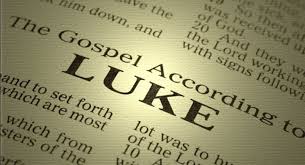

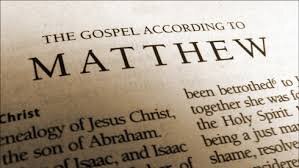

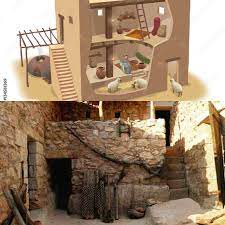

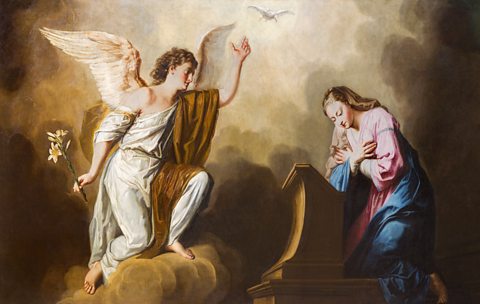

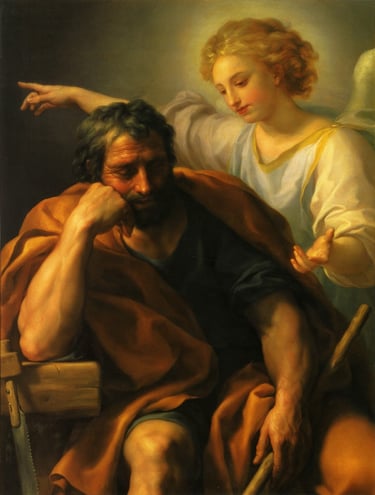

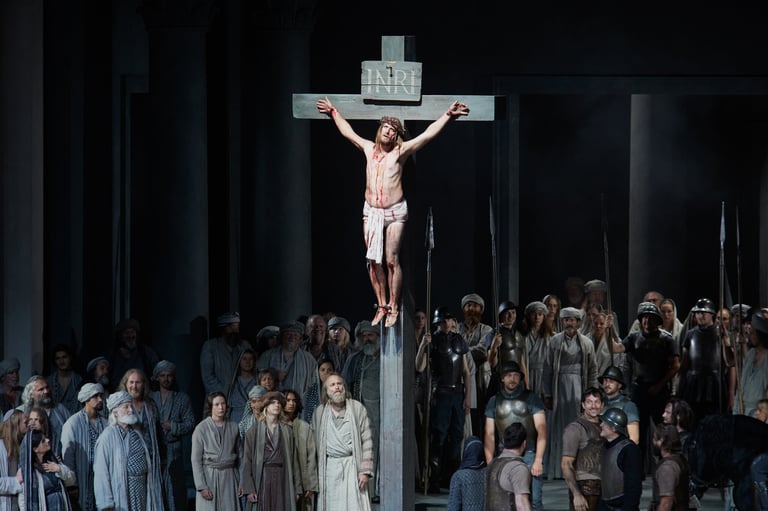

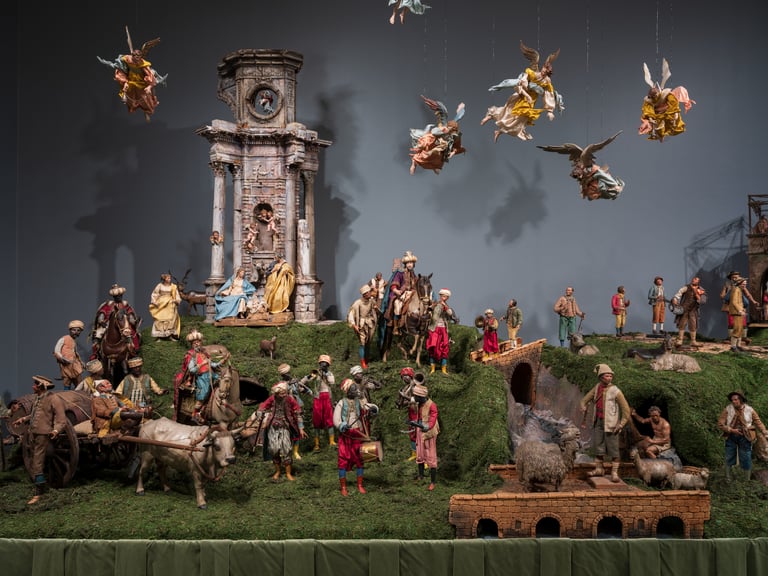


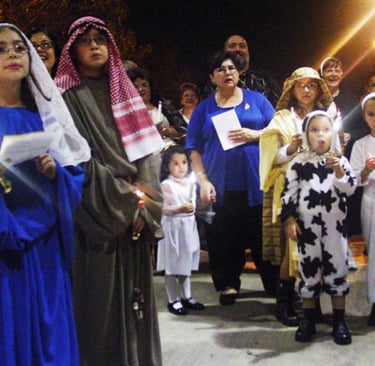
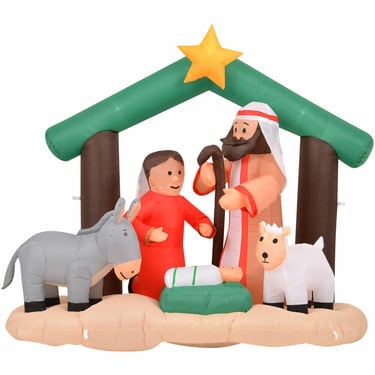

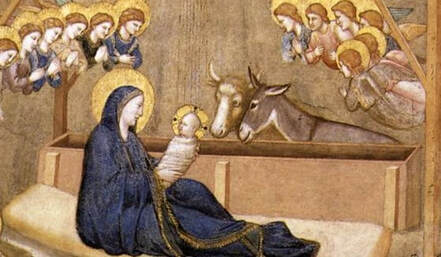

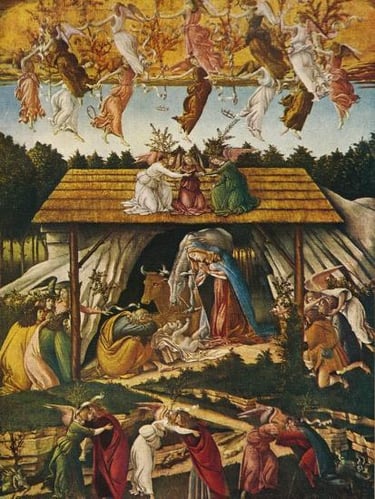

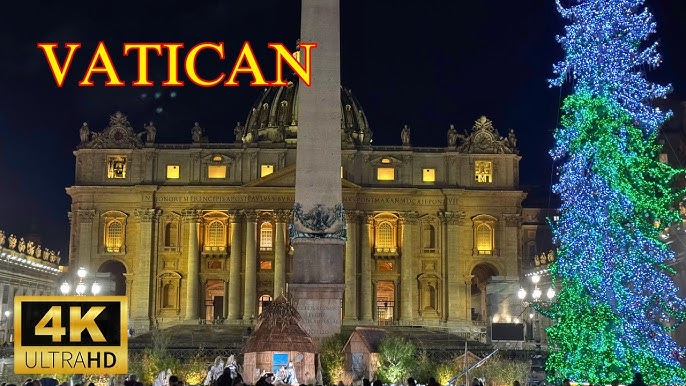

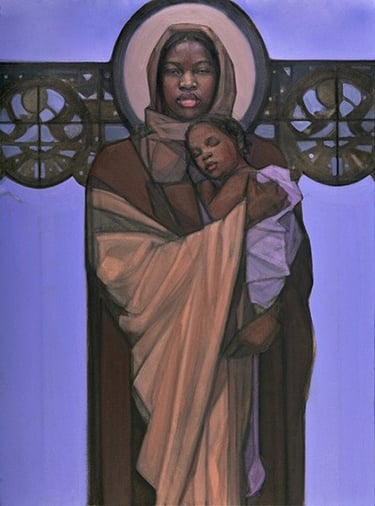

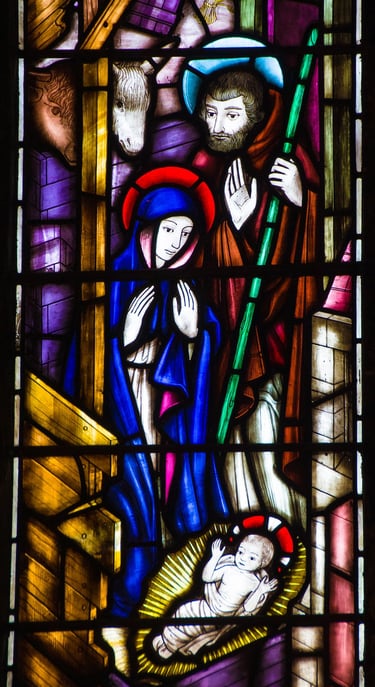

🔎 Key Takeaways: What We’ve Discovered
The biblical accounts of Matthew and Luke offer distinct yet complementary narratives of Jesus’ birth, each emphasizing different theological themes.
Historically, first-century Judea was a politically charged setting, shaping how early Christians understood and preserved the Nativity story.
Theologically, the Nativity is not just about a baby in a manger—it’s about incarnation, divine humility, and the radical hope of redemption.
Artistic and literary traditions have ensured that the Nativity remains one of the most visually and emotionally compelling stories in human history.
In today’s world, the Nativity continues to be reinterpreted, debated, commercialized, and celebrated in vastly different ways—from sacred worship to festive spectacles.
